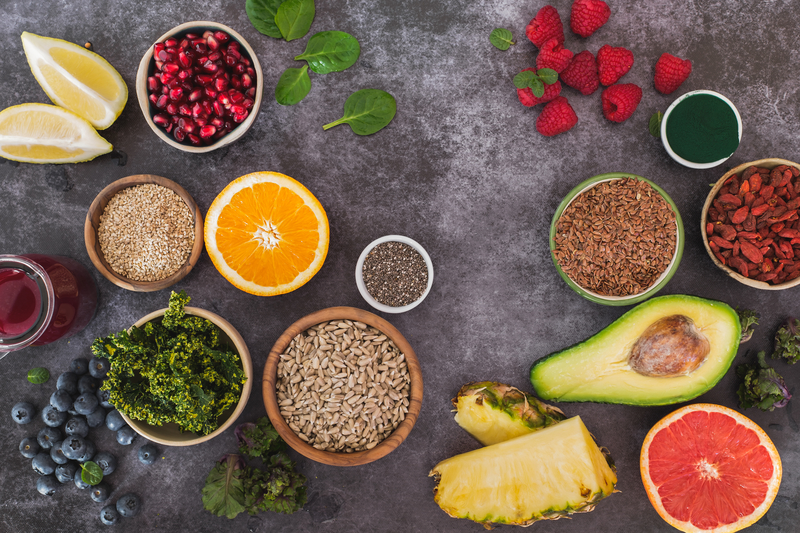What is the Whole30 Diet? A Beginner’s Guide (see photos)

The Whole30 Diet was created in 2009 by Melissa and Dallas Hartwig, who are both Certified Sports Nutritionists. The premise of this program is to consume only whole foods for 30 days to help reset your diet and “change your life.”
So, let’s say vegans are vegetarians kicked up a notch—maybe extreme vegetarians, for illustration purposes. Well, for all intents and purposes, we could also consider folks who follow Whole30 as Paleo fans kicked up a notch—i.e., extreme Paleoists?
Okay, so what exactly constitutes as a whole food? Vegetables, fruits, nuts (except peanuts), eggs, and meat are all on the list.
What does it mean to be Whole30 compliant?
Since the list of acceptable foods on the Whole30 program is pretty extensive, I thought it may be a better idea to first discuss what is omitted from the Whole30 Diet:
- All grains (wheat, rice, oats, corn, etc.)
- Legumes (beans, chickpeas, lentils, peanuts)
- Soy and all soy-containing products
- Dairy (milk, yogurt, cheese)
- Sugar, artificial sweeteners, and natural sweeteners (this includes Stevia)
- Carrageenan, MSG, or added sulfites
- Alcohol
What CAN you eat on the Whole30 Diet?
The primary rule of Whole30 is to consume foods with very few ingredients, all pronounceable ingredients, or better yet, no ingredients listed at all because they’re whole and unprocessed. The goal is to eat moderate portions of meat, seafood, and eggs; lots of vegetables; some fruit; plenty of natural fats; and herbs, spices, and seasonings.
Seems simple enough, right?

What are the perks of Whole30?
I would have to say that much like most of the “diets” and meal plans that are being offered these days, they all center around the same premise, and that is to put the focus back on good nutrition, teach portion control, and develop better habits about food in general.
The Whole30 program is no different. This diet, while initially set up for a 30-day period, can become a lifestyle. It may also prove to be both manageable and effective to achieve optimal health, body composition, and performance for many.
There are no calories to count or measurements to use, and there isn’t a set eating plan that you are required to follow. In fact, nobody ever makes you eat anything you don’t want to eat.
What’s the downside of the Whole30 Diet?
Well for starters, as mentioned previously, the Whole30 diet doesn’t ever make you eat anything you don’t want to eat—which we can all agree is a huge deciding factor in how compliant you are with the program. However, the caveat to that is that there are quite a few things you are not allowed to do while adhering to the Whole30 diet.
- No alcohol or smoking. For some folks, this may be a deal breaker. I would personally look at this as a twofer (or even “threefer”). Making smarter choices all around.
- No weighing yourself for 30 days. I am currently coaching a weight-loss challenge, and I can tell you from experience this would darn near kill some folks to not be able to weigh themselves each and every day (sometimes more).
- No sugar. Not even Stevia. This means no BioTrust Low Carb Protein Blend, which is made from natural ingredients.
- No dairy. This means you—cheese, yogurt, milk, and delicious ice cream and frozen yogurt.
- No grains. Yes, ALL grains are off limits.
There is no turning back once you have begun the Whole30 because if you have even one slip up, you must start the program over with Day 1. (Don’t shoot the messenger.)
Is this program a whole lotta bull?
To be honest, I can completely get behind any program that wants to limit processed foods and encourages consuming more fruits and vegetables. I will sign on that dotted line all day long. There are many moving parts to this program, and most of them I can appreciate and support.
I am not sure if everyone would benefit from the removal of all dairy products, or even the removal of certain natural sugars, or all grains (the exception may be in the case of having a sensitivity or allergy).
Bottom line is that this is a fairly restrictive diet. Yet in my experience, there is no better way to decide if a program is right or wrong for you unless you check it out and even try it yourself. And this one is only 30 days. You can try anything for 30 days, right?







